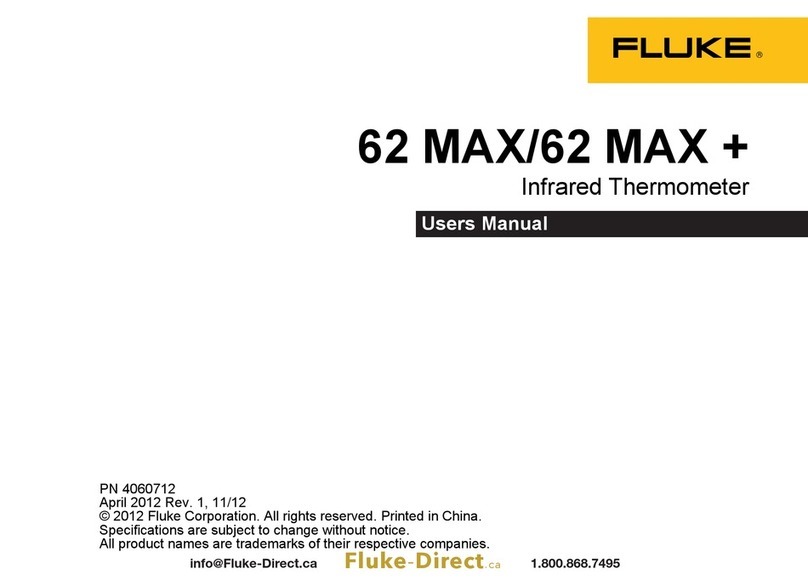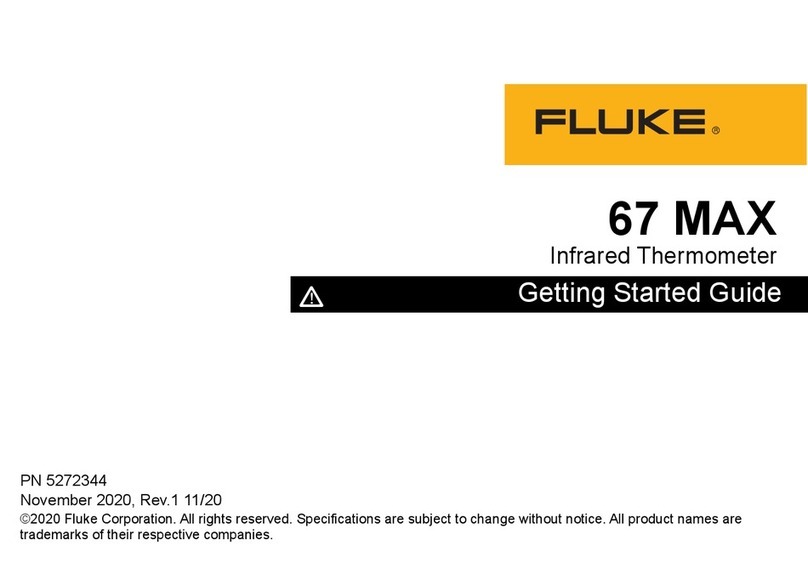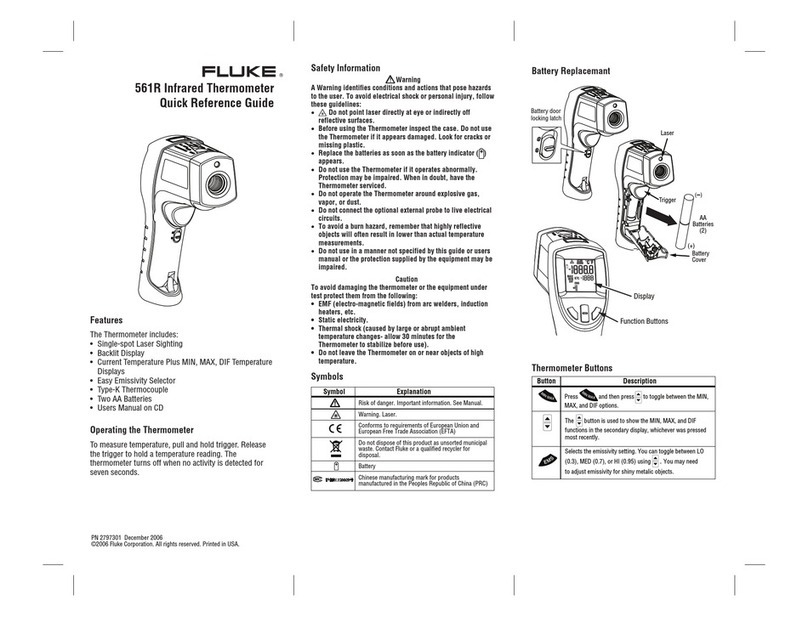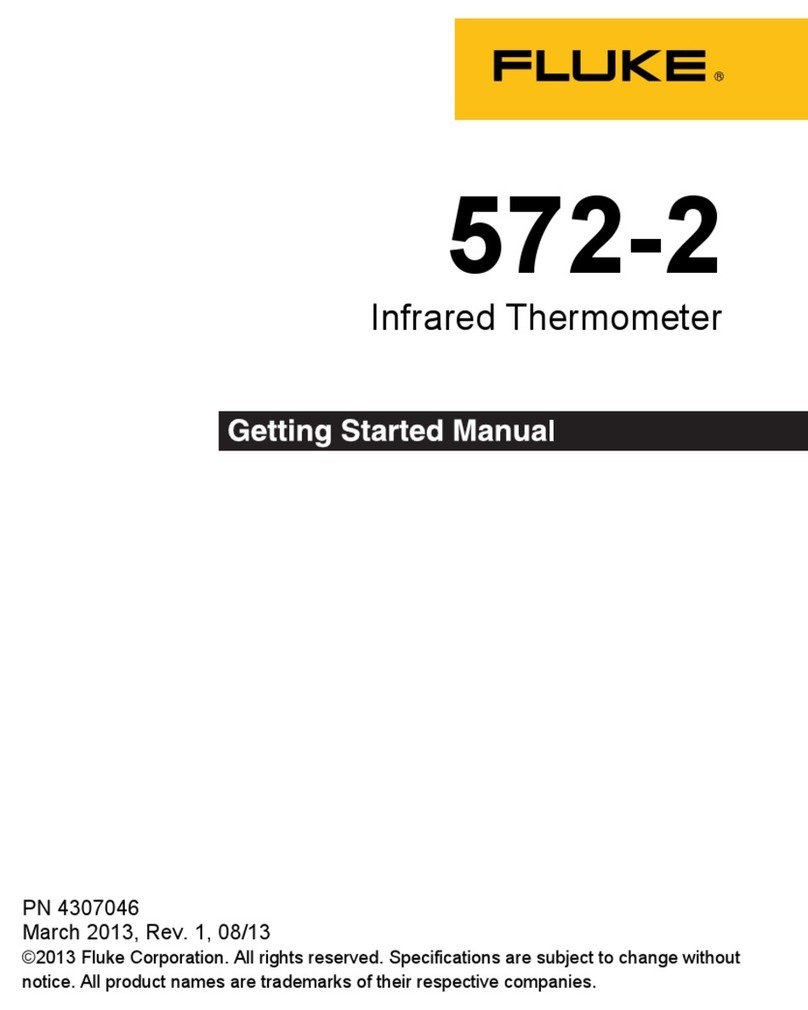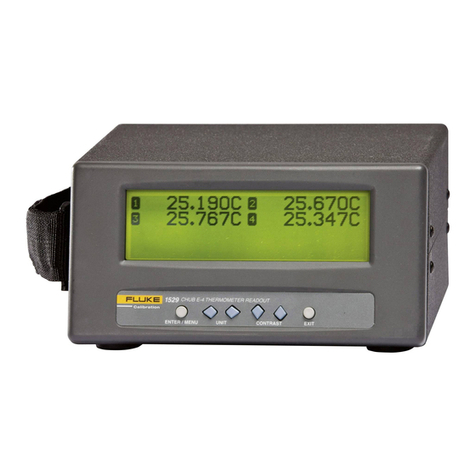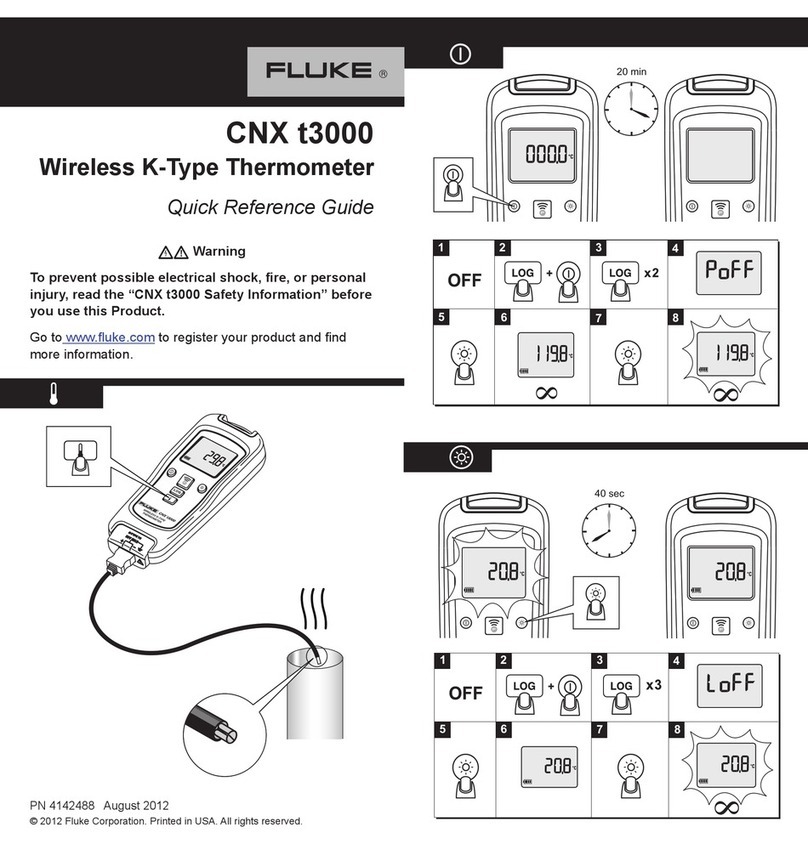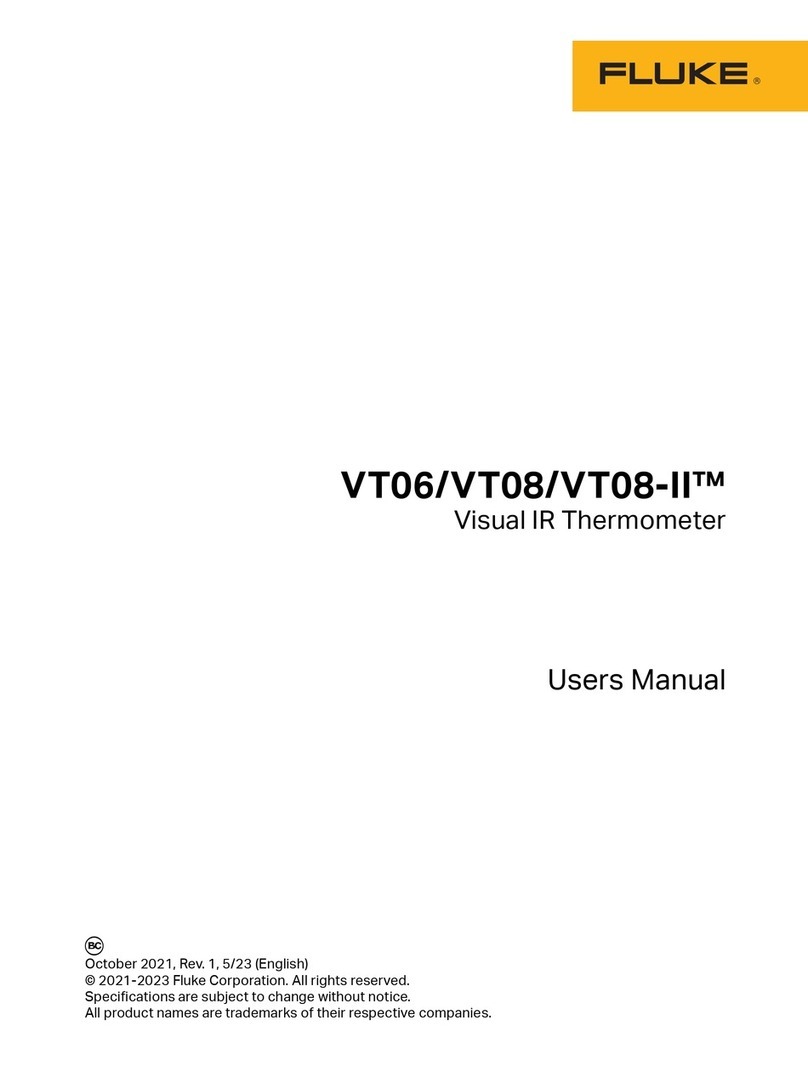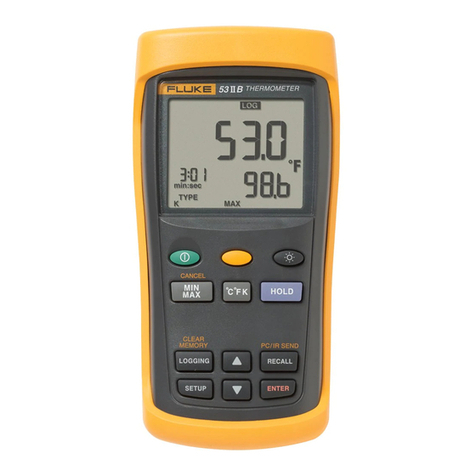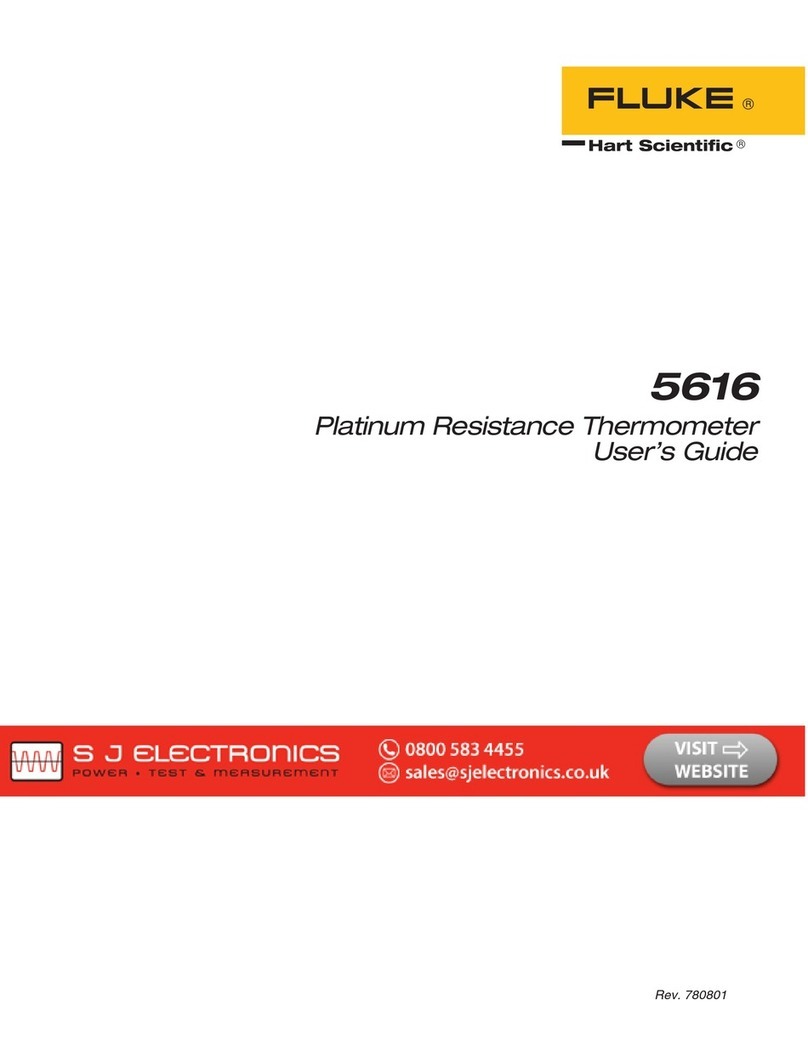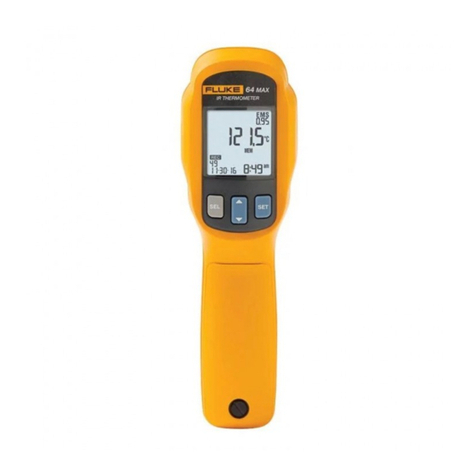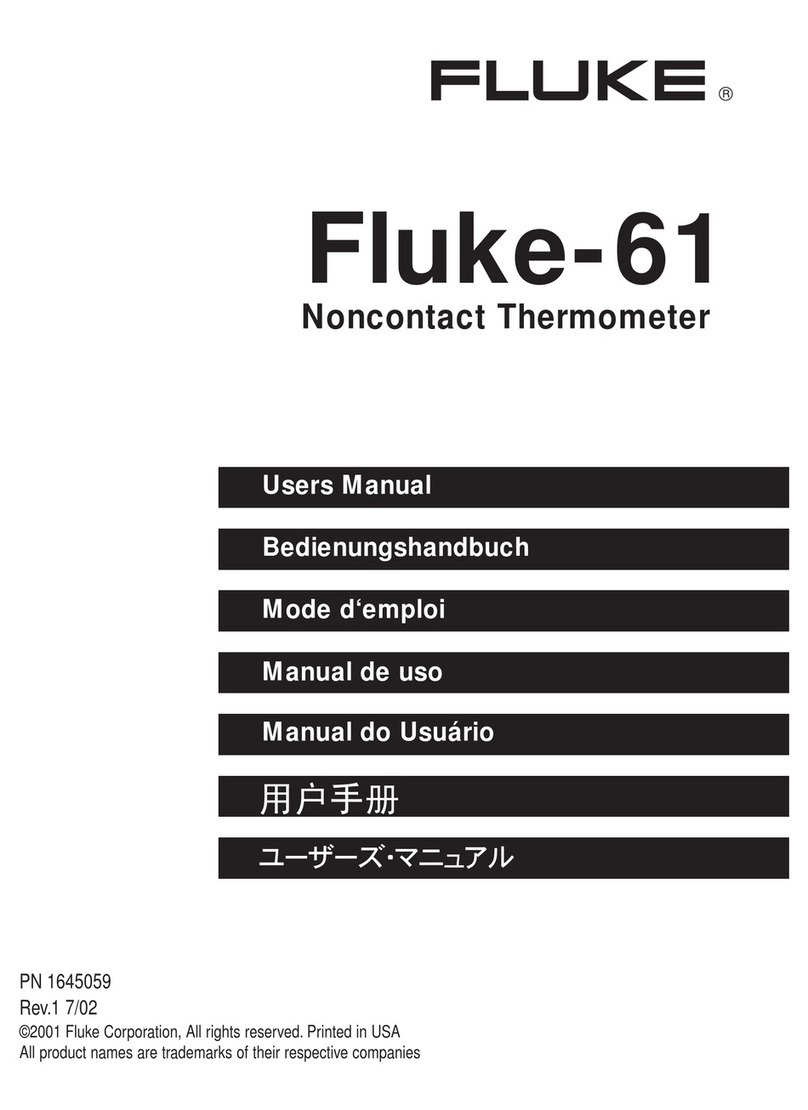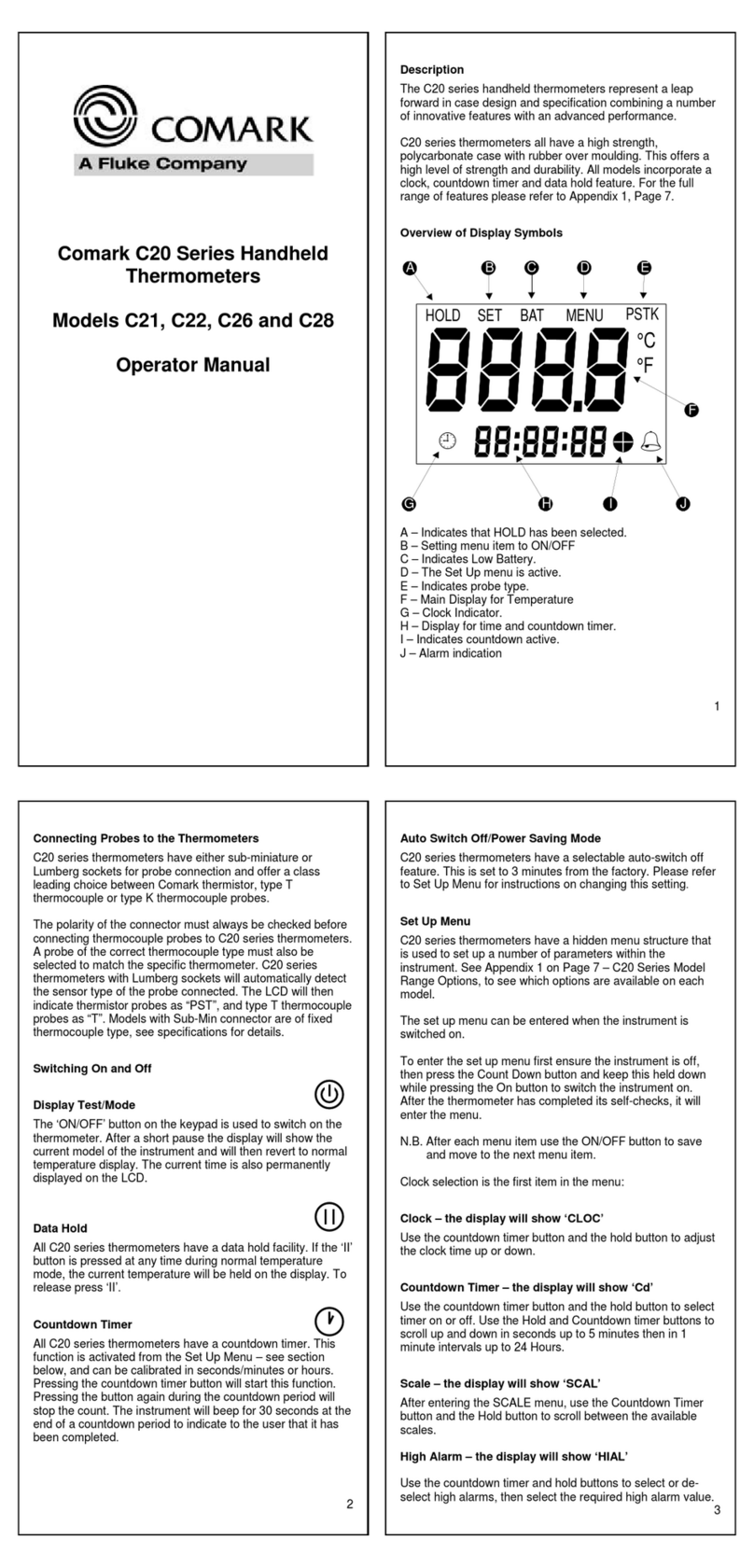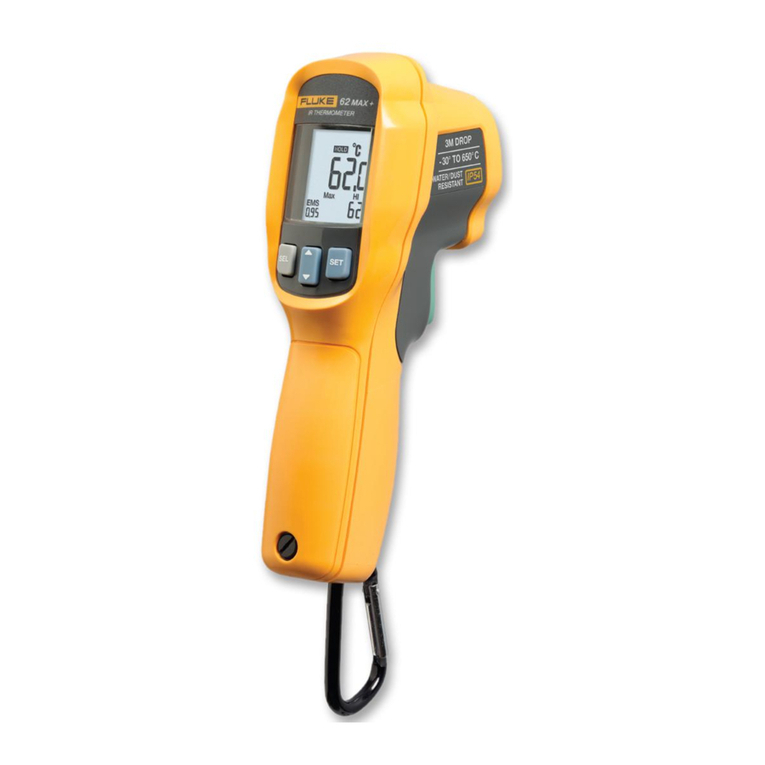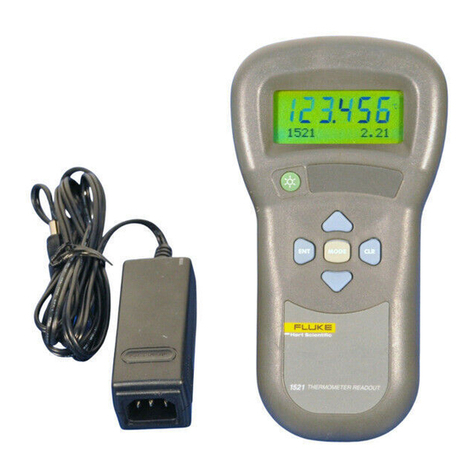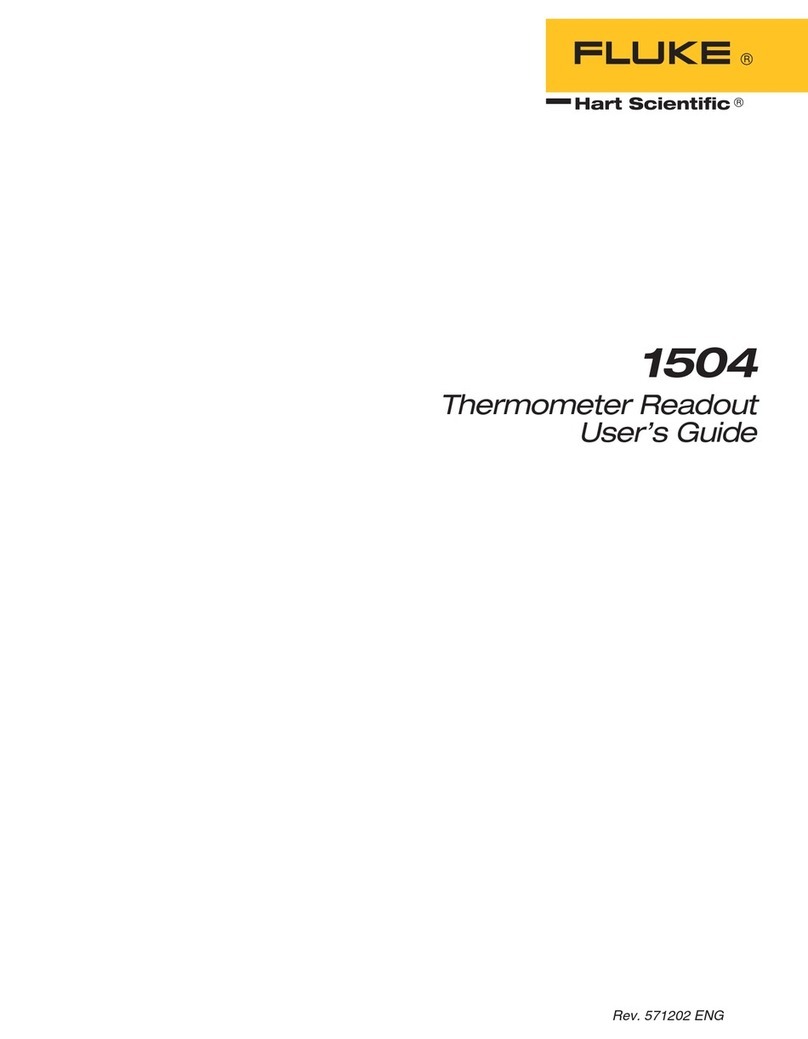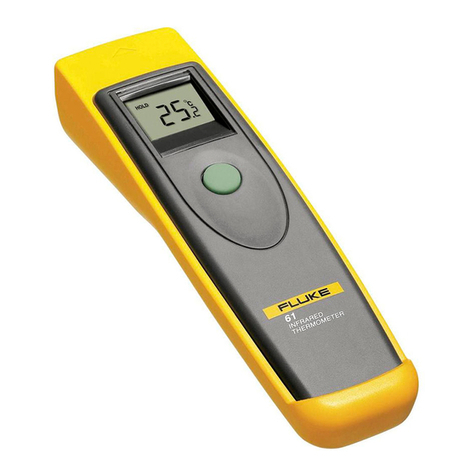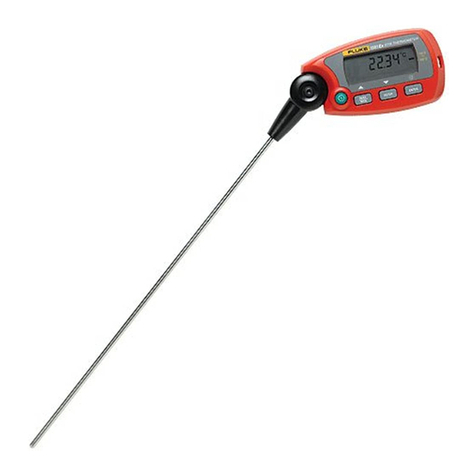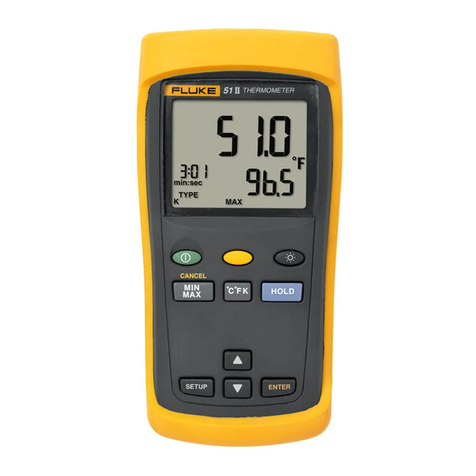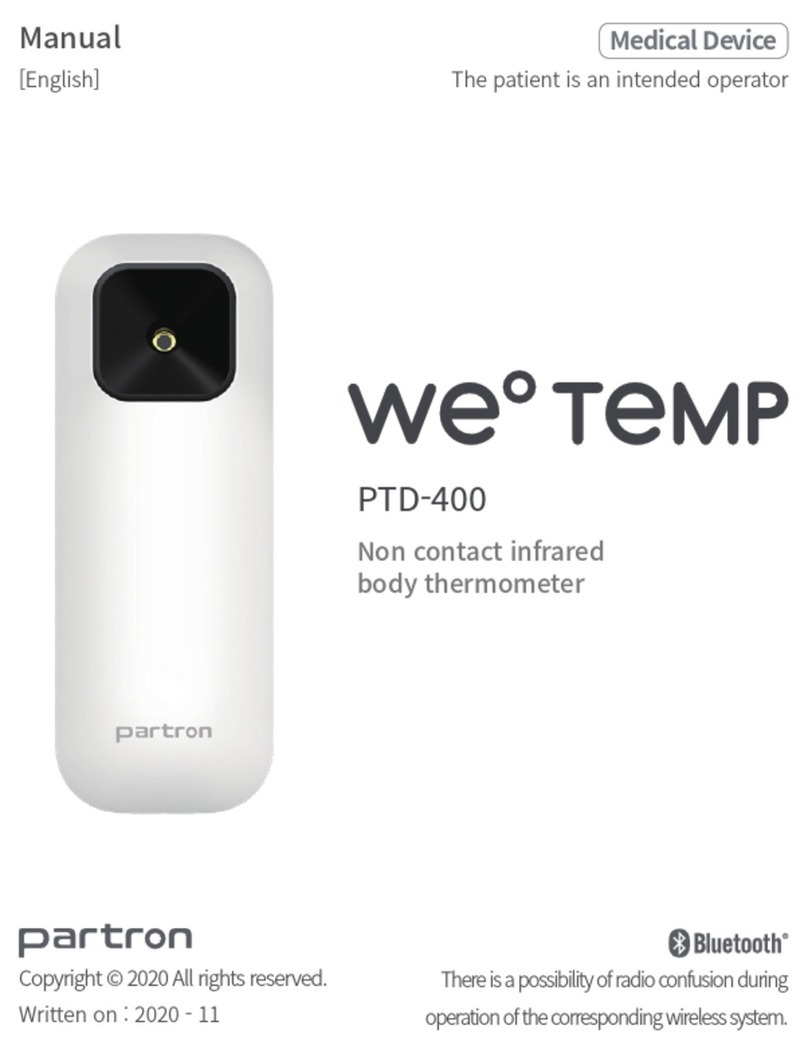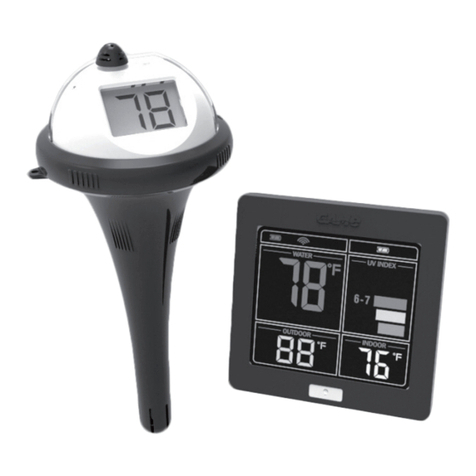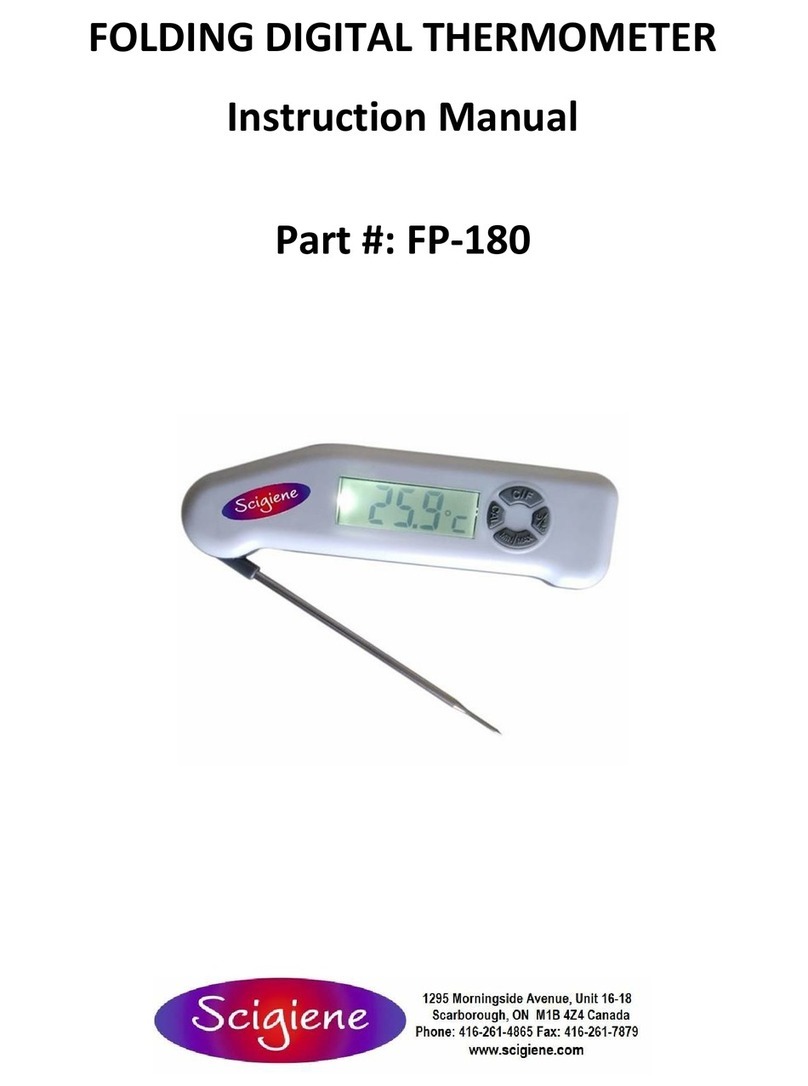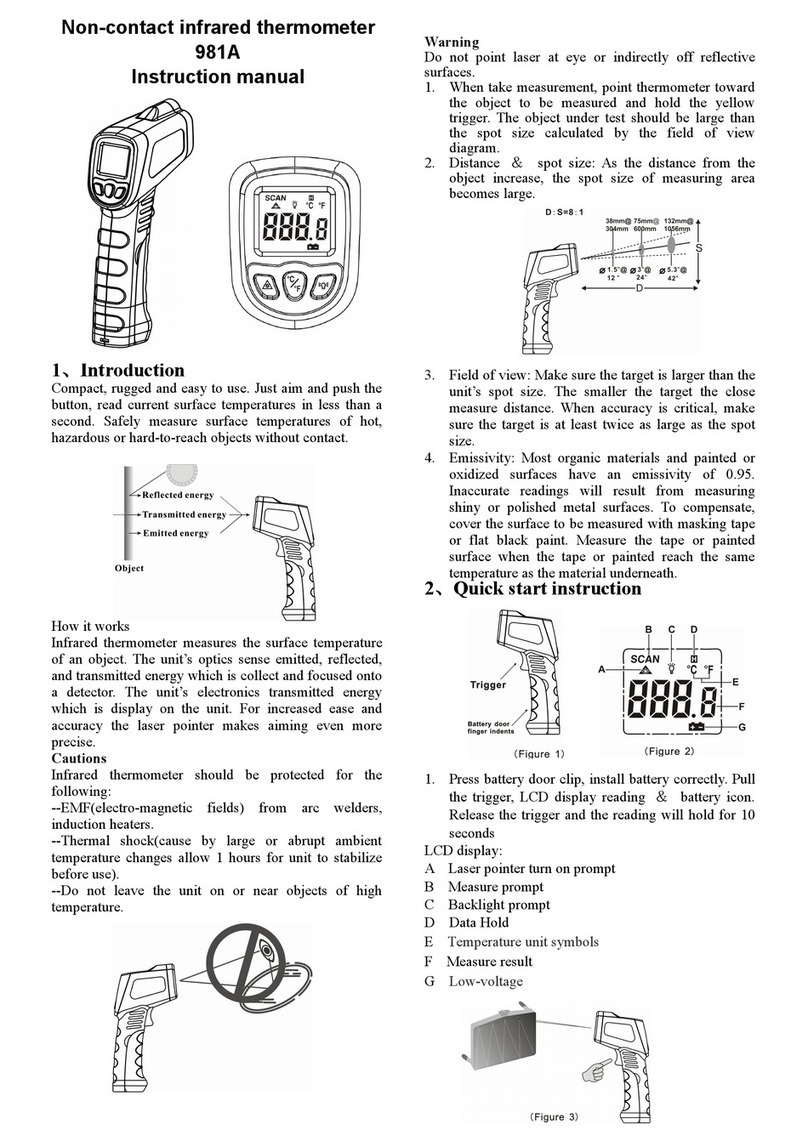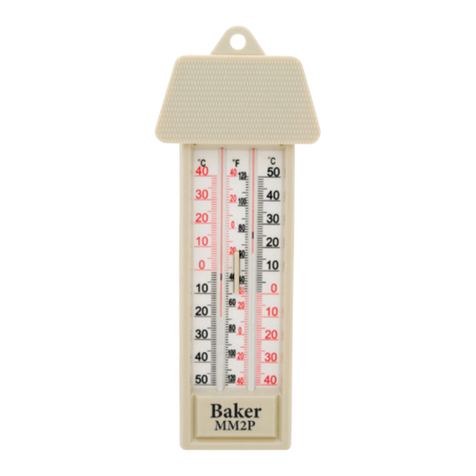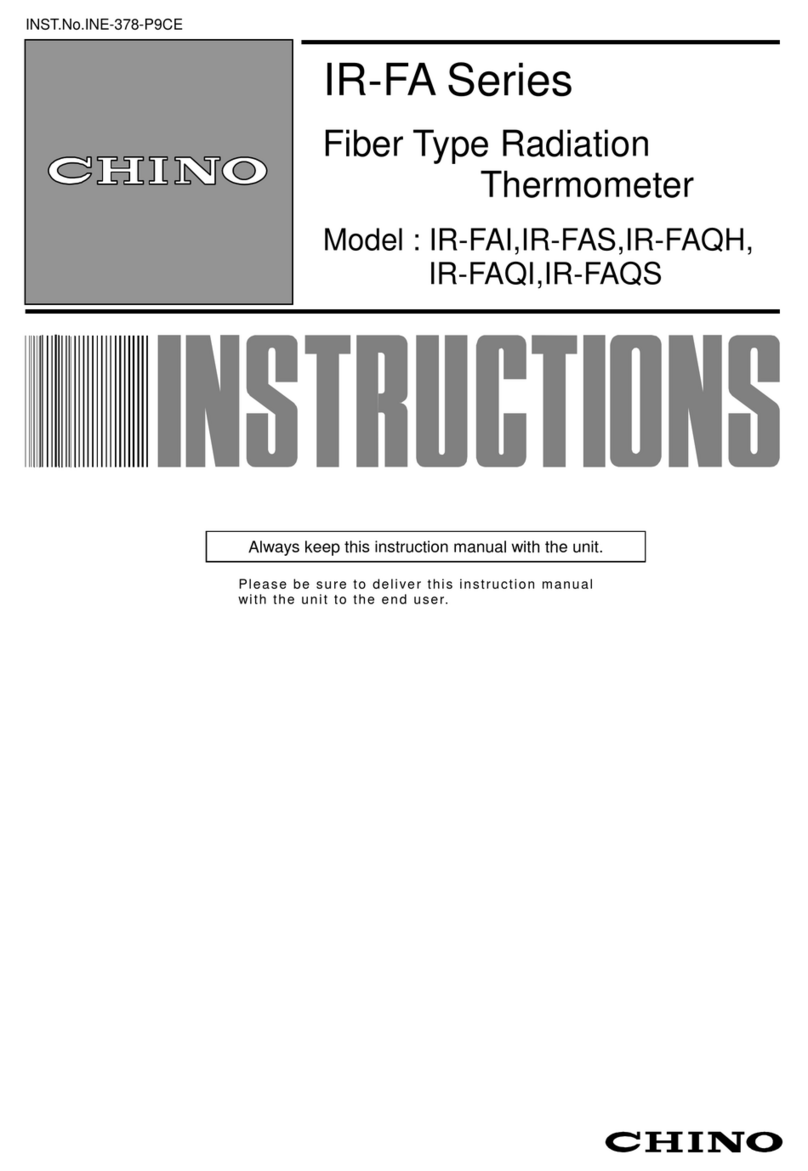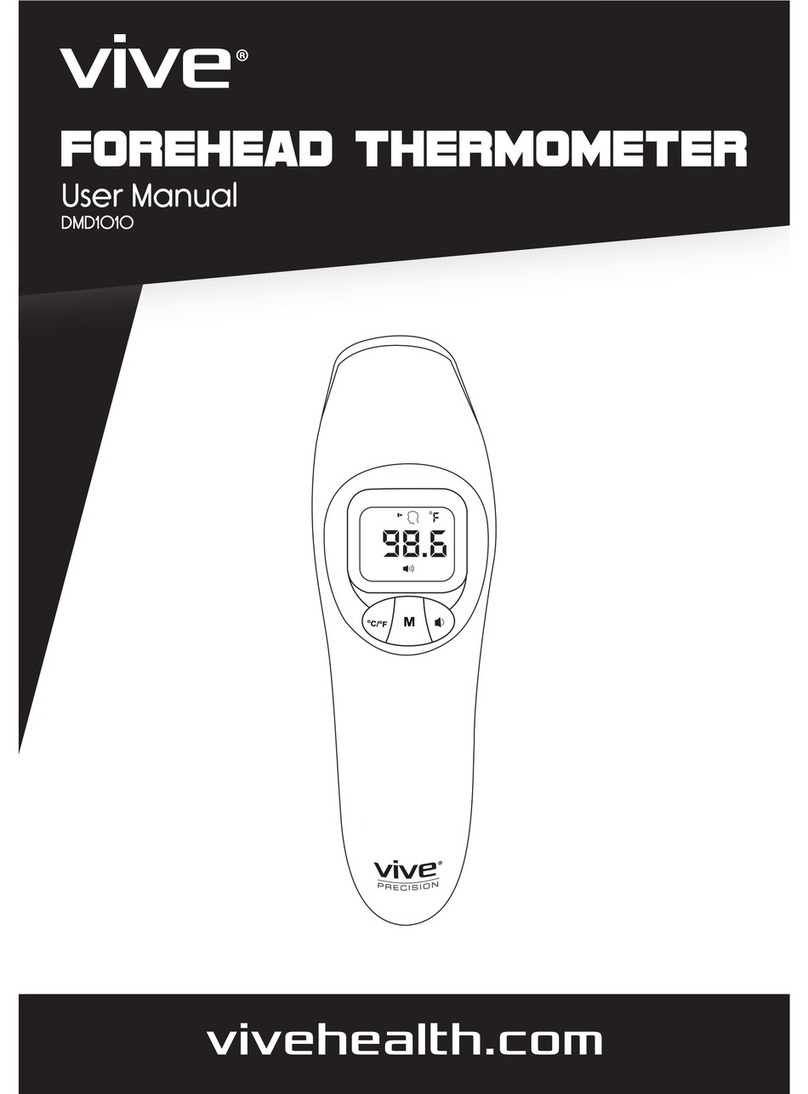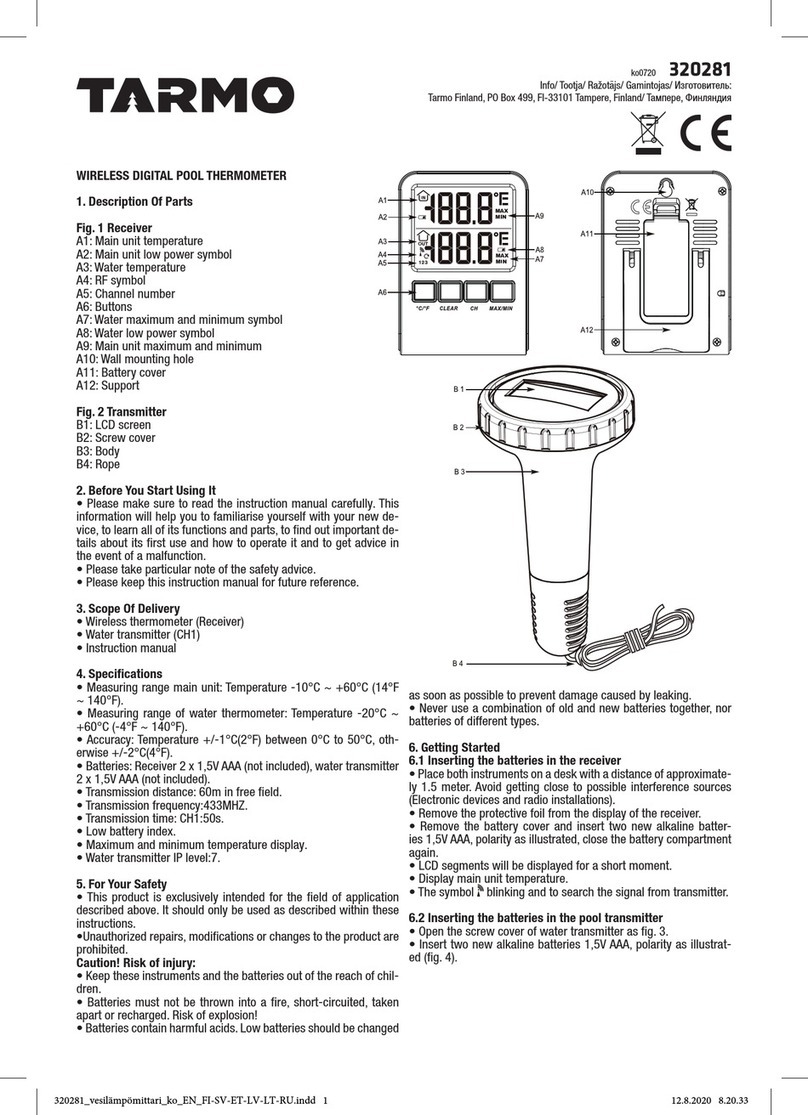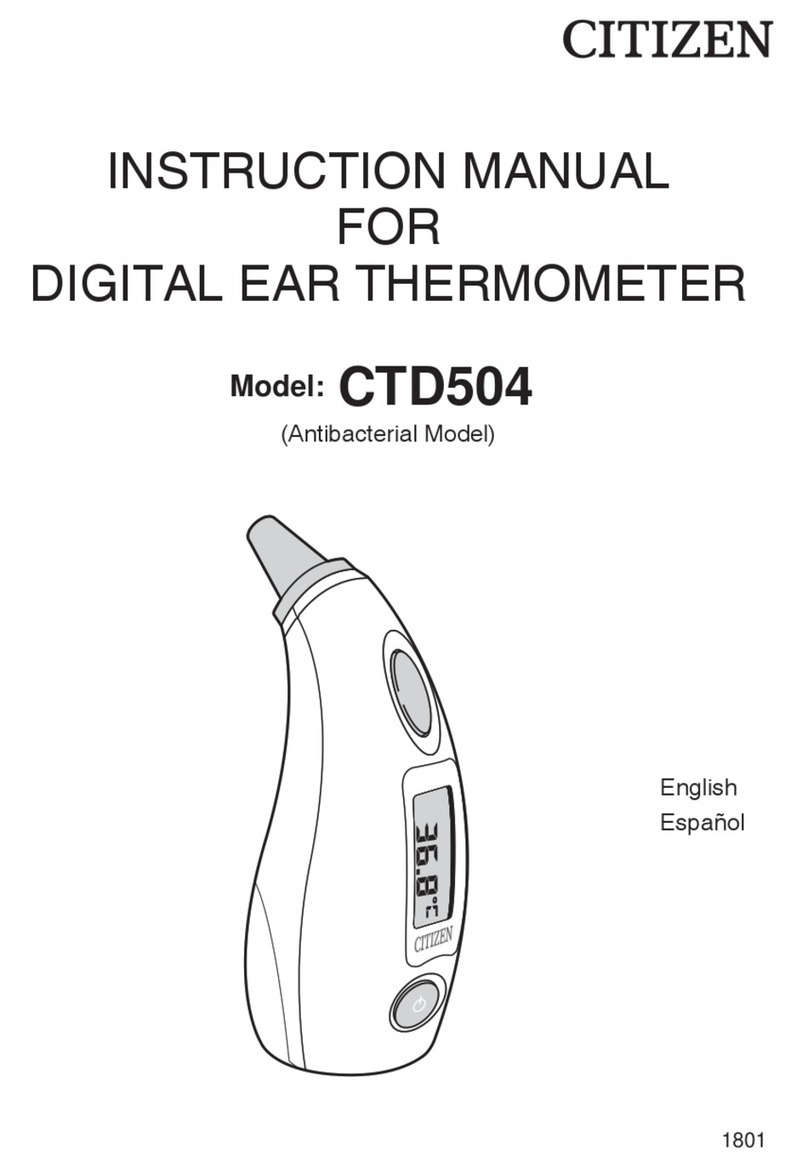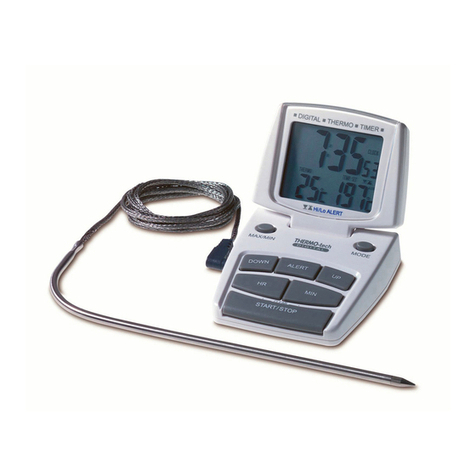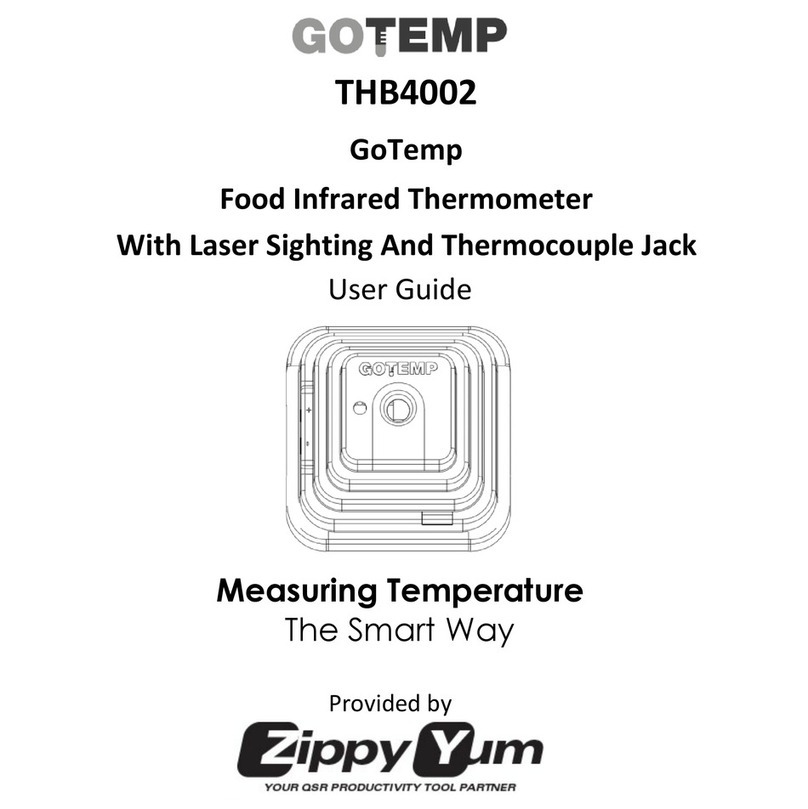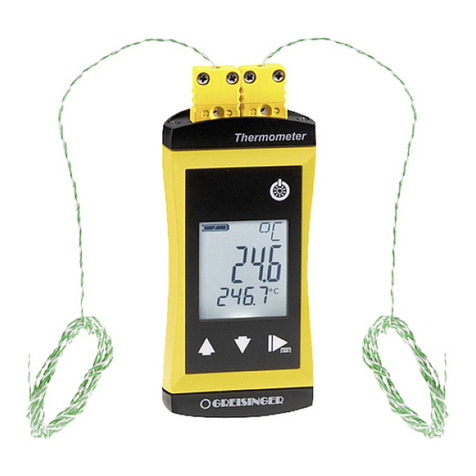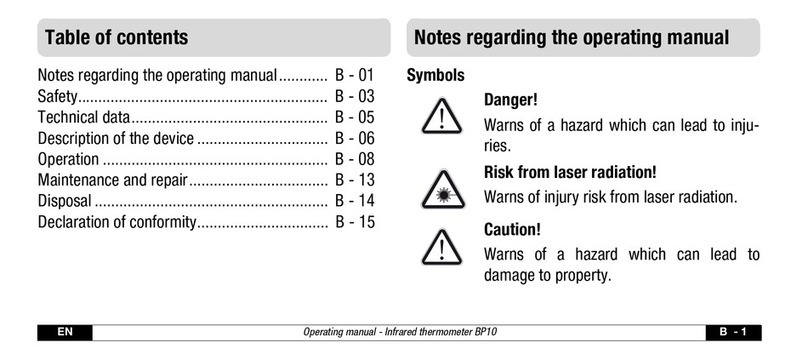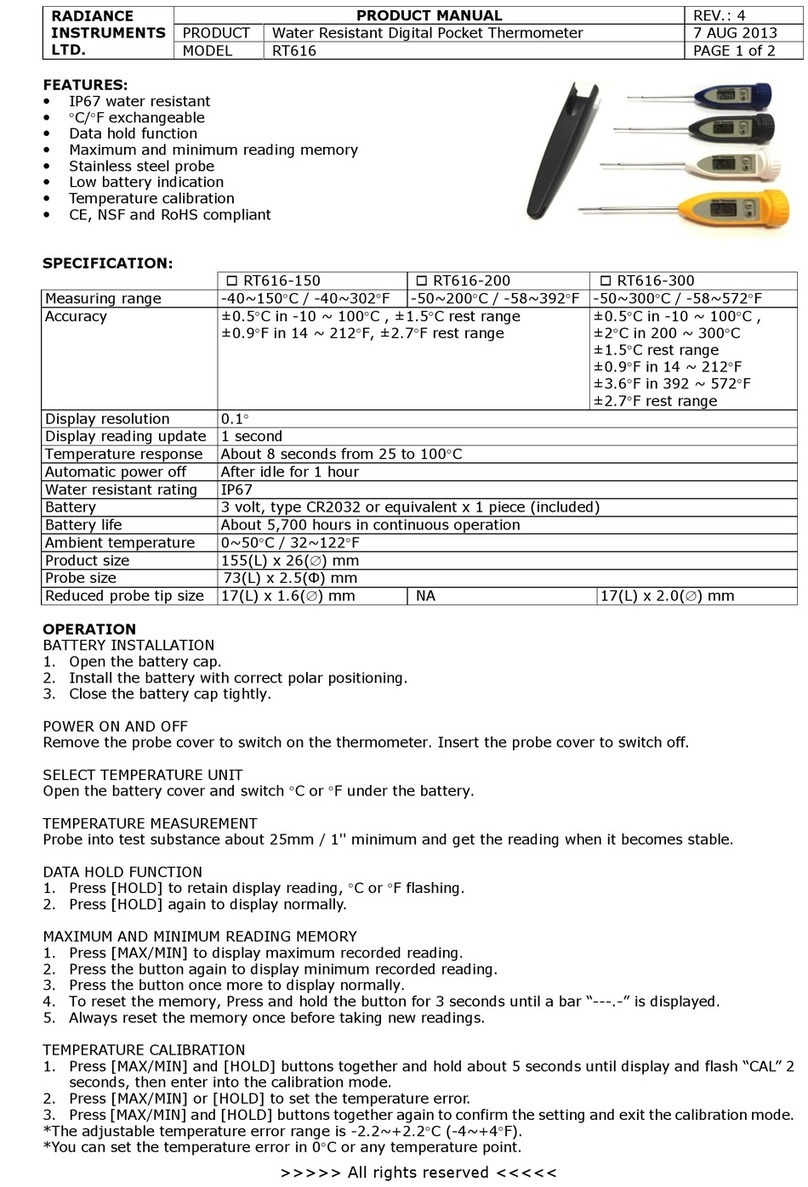6
574
Concerning Factory Mutual Approved
Nonincendive Devices:
Operation in Environments that Require
Nonincendive Devices
WARNING
IN HAZARDOUS LOCATIONS DO NOT use serial port con-
nections, change batteries or open serial port cover. To re-
duce risk of explosion in hazardous locations, use only Fluke
temp probe part 2432508 and do not use other accessories,
such as power supply and cables.
A nonincendive rating (NI) indicates that this infrared thermo-
meter has been tested to standards for preventing explosi-
ons in hazardous areas by limiting the ability of equipment
to ignite a specifi ed fl ammable gas or vapor-in-air mixture.
Nonincendive equipment is incapable of releasing suffi cient
electrical or thermal energy to ignite fl ammable gases or
vapors under NORMAL operation and environmental condi-
tions.
This noncontact thermometer has a Factory Mutual Nonin-
cendive rating. The rating from this USA organization reads:
“Nonincendive, Class I, Division 2, Groups A, B, C, D; Class
I, Zone 2 IIC; T4 Ta = 50ºC when used with 1.5V alkaline
batteries.“
A Class I, Division 2 location is a location:
• where volatile fl ammable liquids or fl ammable gases
or vapors exist, but are normally confi ned within
closed containers;
• where ignitable concentrations of gases, vapors or liquids
are normally prevented by positive mechanical
ventilation; or
• adjacent to a Class I, Division 1 location, where ignitable
concentrations might be occasionally communicated
• groups A, B, C, D refers to: Acetylene, Hydrogen,
Ethylene, and Propane.
